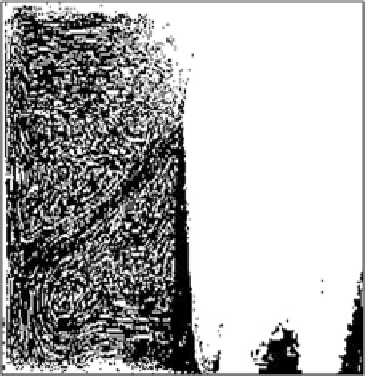Information Technology Reference
In-Depth Information
Fig. 12.10
Binary image
12.3.1 Boundary Enhancement Techniques
Boundary enhancement methods use information about the intensity differences
between neighboring regions in order to separate these regions [
2
]. Boundaries or
edges are discontinuities of a color or grayscale intensity in an image. These
intensity discontinuities can help to identify the physical extensions of objects in a
digital image. Figure
12.11
shows four possible schemas of an edge considering a
continual one-dimensional domain [
21
].
The edges generally are characterized by its amplitude and slope angle. A
detector algorithm must find the slope midpoint that characterizes the edge. This
task would be very simple if the edge slope angle is 90
o
, called a step edge.
However, this inclination is not found in digital images, step edges exist only for
synthetic and graphical images. In a real picture, the transition is very irregular.
There are many different methods to enhance an edge in order to segment the
different regions in an image. However, each one has different approaches that
generate different results, depending on the specificity of the image. Figure
12.12
shows the obtained results considering the application of some edge detector
methods (Log, Prewitt, Roberts, Sobel, Zero-Cross).
When different methods are used, many different aspects in images can be
found. The algorithms of edge detection can also modify the results when these
methods are used to measure objects, as it is the main objective of this chapter.
In a previous work, diverse edge detector methods were evaluated [
22
]. The
aim of this work was to reach the better result in an aperture area calibration,
considering edge detection. Thus, six methods for edge enhancement were tested
and compared each one with average value of all results. This comparison was
carried out through to define if some of the methods are not appropriate for
aperture area measurement. We used the following edge enhancement algorithms:
Sobel, Prewitt, Roberts, Laplacian, Zero-Crossing, and Canny [
23
,
24
].

Search WWH ::

Custom Search